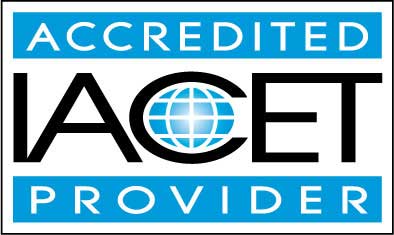Online Class: How to Write Short Stories for Children

no certificate
with CEU Certificate*
-
12Lessons
-
20Exams &
Assignments -
4,855Students
have taken this course -
11Hours
average time -
1.1CEUs
Course Description
The Art and Craft of Children's Storytelling: Unleashing Your Inner Author
Do you find yourself brimming with stories and ideas that you yearn to share with the world, yet constrained by the hustle and bustle of daily life? You're not alone. Many potential authors are inhibited by their hectic schedules. But what if there's a way to craft tales that not only suit your routine but also have a profound impact on young minds?
Welcome to the world of children's writing—a realm where imagination takes flight, condensed into short yet powerful narratives. Interestingly, some renowned children's authors began their journey by jotting down tales during brief intervals, like during a tranquil lunch break or as their little ones ventured into dreamland.
However, let's clear a common misconception: writing for children isn't a walk in the park. The brevity of children's stories doesn't mean they're void of depth. Editors in the realm of children's literature anticipate well-fleshed characters, immersive plots, and vivid descriptions, all tightly knit into a concise narrative. A skillful children's author will master the art of precision, ensuring every word holds value. The challenge lies in engaging young minds with comprehensible language while avoiding a patronizing tone.
Course Outline:
-
Lesson 1: Igniting Your Passion - Begin your journey into the vibrant universe of children's literature, understanding its nuances and potential.
-
Lesson 2: Dive Right In - Overcome hesitations, and understand the importance of taking the leap to put your thoughts on paper.
-
Lesson 3: Crafting Lovable Characters - Dive deep into the creation of memorable, relatable characters that resonate with young readers.
-
Lesson 4: Weaving the Narrative - Explore the intricacies of plotting for children, ensuring tales that captivate and inspire.
-
Lesson 5: Painting with Words - Understand how to build vivid settings and the subtle art of description to transport young readers.
-
Lesson 6: Conversations that Matter - Delve into the craft of authentic, engaging dialogues that drive the story forward.
-
Lesson 7: Story Sculpting - Explore various models and structures that can shape your narrative.
-
Lesson 8: Crafting the Initial Narrative - The importance of getting the first draft out, imperfections and all.
-
Lesson 9: The Refinement Process - Understand that writing is an evolving process. Learn techniques for revising and refining your tale.
-
Lesson 10: Sharing Your Tale - Gain insights into presenting your story to the world, and absorbing feedback.
-
Lesson 11: Navigating the Publishing Landscape - Decipher the dynamics of the publishing world, understanding target markets and potential outlets.
-
Lesson 12: Persevere and Shine - Writing is a journey filled with ups and downs. Learn strategies to keep the motivation alive and continue your creative journey.
Whether you aspire to pen down stories solely for your children or dream of seeing your book on store shelves, captivating the hearts of thousands, this course offers the guidance you seek. Beyond techniques and methodologies, it promises the joy of molding young minds, sparking their imagination, and leaving a lasting impact.
Writing for children is not just an endeavor; it's a responsibility and a privilege. And with the right tools and guidance, it can evolve from a mere hobby to a fulfilling career.
Step into this magical journey, sculpting tales that resonate with purity, wonder, and endless possibilities. Enroll today, and redefine your narrative, one story at a time.
Course Motivation
"I would love to write if I could only find the time." How many times have you heard yourself say that? For every time saving device modern technology invents for us, there are at least two new ways to waste time: reality TV, the Internet, video games. Our society is rushed, harried and running late. So how do you find the time to write?
The short answer is, you'll never find time; you'll have to make time. No matter how busy you are, though, I guarantee that there is some way to make writing a part of your life. Here are some strategies for carving a few minutes out of the busiest day.
- Get up earlier or stay up later. Easier said than done? Yes, but worth it if you can manage it. Ideally, a writer needs quiet time alone to work, so what better time than when the phone is done ringing and everyone else in the house has gone to sleep? Of the two, many people prefer staying up late to getting up early, but give early rising a try. You might find that your mind is clearer in the early morning and that problems and hassles that have accumulated during the previous busy day have faded into the background.
- Carve ten or twenty minute chunks out of your daily routine. If you can't find an hour or two to work, try claiming a couple of shorter time periods. There's no law that says you should have one writing time per day. Write for twenty minutes during your lunch hour, ten in the car just before you come home from work, and ten more just before you go to bed. That's forty minutes a day, and that's enough time for you to really accomplish something if you do it every day. The true magic of this approach, though, lies in the fact that between writing sessions your subconscious mind will continue to mull your story over while you are doing other things, and when you sit down for you next brief writing stint, you may find a new idea or plot twist that had escaped your notice before.
- Make use of chore time. Ariel Gore, author of The Mother Trip, started her writing career as a single mother. She learned to get much of her writing done while driving. She would compose sentences in her head as she drove, and jot them down during red lights. Pretty extreme? Yes, but she shows us that if you really want to write, there's always a way to find time. You don't have to have a pen in your hand to be writing. If you are waiting in line, driving, or vacuuming the floor, think about your story. What would the next scene or sentence be if you were writing right now? When you think of something, make a note or two in a notebook or dictate to a voice memo recorder. When you do have time to sit down with your pen or laptop, you can expand on the notes you've made rather than trying to remember what you thought of earlier.
- Turn off the TV. People who say they're too busy to write often watch an hour or two of TV a day, browse random Internet sites, or click every YouTube link their friends send. You can find all the time you need to write just by doing it before you turn on the TV or check your e-mail. Make these activities a reward you give yourself after you've spent some time writing. If there's a TV drama you simply can't live without, set your VCR to record it, write while it records, and watch it after you've written.
Many people who say they're too busy to write are really saying something else. They are afraid that when they finally sit down to write, they'll discover that they aren't as brilliant as they hoped they'd be; that the stories they write won't be good enough to publish, or even good enough to show a loved one. In essence, they are afraid they'll fail. It is much easier to pretend you don't have time than it is to put your ego on the line and actually get some words on paper. The simple fact, though, is that if you want to be a writer you must write. Give yourself permission to stumble at first. Tell yourself that even lousy writing is a step in the right direction. If it's bad, throw it away and start something else, or try revising it. Ernest Hemingway was said to have rewritten sentences dozens of times before deciding they were just right, or at least close enough that he could live with them.
You probably won't be a great writer right out of the box, and that's okay. Keep writing and you'll improve. Keep claiming you're too busy and you'll never write a thing.
Your Inner CriticWe all have one. A voice inside that tells us our work is no good causes us to doubt ourselves. You may draft a short story and realize that it hasn't come out quite as you wanted it to. "Told you it wouldn't," your inner critic says. "You're no good at this. Might as well give up. Turn the TV back on, it's safer that way."
This voice means well, believe it or not. It's the same voice that keeps us from sticking our hand on hot burners or skating on thin spring ice. It's the voice that says "Don't do that. You might get hurt." While there's no physical danger in writing or creating other forms of art, for some reason this survival instinct still kicks in. Perhaps somewhere in our hindbrain there is no distinction between real danger and emotional danger. Perhaps on some level, the letdown of a rejected story carries the same weight as the pain of a physical injury.
Whether it means well or not, the inner critic is a major impediment to creativity. If you want to learn to write stories, you have to learn to quiet down your critic. First, hit it with a little rational thinking. The fear that dire things will happen if you write a second-rate story is an irrational fear. Should you try to write something and fail, the world will keep turning and your limbs will be intact. Give yourself permission to write the worst drivel in the world, and realize that even really bad writing is a step on the road to good writing. If it's really so bad, no one but you will ever see it.
Give your mind the chance to throw out ideas, no matter how far-fetched they are. Honor your crazy ideas. They are the stuff from which creativity is made. Somebody once said "you've got to sing like you don't need the money." Write like you're the best writer on earth. Throw your self-doubt in a strongbox and lock it up for an hour a day or so, and you'll be amazed at what you can achieve. The cure for lousy writing is practice, so to paraphrase Bobby McFerrin, "Don't worry, be writing."
Finding Ideas"Playing is still the greatest training you can have, I think, for being a writer. It helps you love life, it helps you relax, it helps you cook up interesting stuff in your head."
-- Cynthia Rylant
Another hurdle that stops would-be writers before they even start is the feeling that they don't know what to write. You might read great stories by authors you admire and wonder where they could have come up with such great story ideas while you're sitting in front of a blank computer screen without the foggiest idea what to say.
The ability to generate ideas is a skill that can be learned, just like riding a bicycle or hitting a golf ball. Creative writers develop habits that help them find ideas everywhere. You can learn to do this too. Here are some strategies for turning your mind into an idea machine:
- Read, read, read. Read the kinds of stories you want to write, and any other stories you like. All great writers are avid readers. Reading great work fills your head with words, and shows you the kinds of characters and situations that make for engaging stories. Beware of judging yourself against the great work you read. Your inner critic is not welcome here. Let yourself be inspired to follow in the footsteps of writers you admire.
- Carry a notebook. Your mind is working all the time, and chances are you do get story ideas, but they come while you're daydreaming in a meeting or driving to work. "That's a good idea," you tell yourself. "I have to remember that." Only you don't remember. Carry a small notebook or folded piece of paper and a pen or pencil around with you, and jot down ideas when they happen. If you are gadget-friendly, a PDA's note pad works well also. If you work at a computer, you can have a document open in the background. Alternatively, you can carry a tape recorder or digital voice recorder, and dictate your ideas. If an idea for a plot or character or perhaps a title or line of dialog strikes you, jot it down or record it. Don't judge it at this point; you can always ignore it later. If you make this a habit, you'll find more and more ideas coming to you, so many that you won't have time to put your notebook away. Not all of these ideas will be useful, but some of them will be. By honoring each idea with a place in your notebook, you will encourage them to keep flowing.
- Develop "writer's ear." Listen to the things people say to you, and eavesdrop on conversations on the bus or by the water cooler. Talk to your co-workers and friends about their kids and the things they are going through. People love to talk about the drama in their lives. If you hear someone talking about a funny or a difficult situation, jot a note in your book. It could be the makings of a short story.
- Listen to children. If you have kids of your own, try to see the world through their eyes. What kinds of things matter to them? If you don't have kids, find ways to interact with them. You will need to know a few if you want to write effective children's stories. A few professions afford the opportunity to work with kids. Teachers, of course, and some doctors. Spend time with nieces, nephews, or grandchildren. Spend time with friends who have kids. Even listening to neighborhood kids playing outside can help you learn how they talk. Take down things they say in your notebook.
- Ask "what if." Kids do this all the time, and so do creative writers. "What if you were playing in the sandbox and a dinosaur came wandering by?" Let your mind roam free. Ask the craziest questions you can think of. Unlike many adults, kids are perfectly willing to suspend their belief when it comes to stories. Well, what would happen if there was a dinosaur by the sandbox?
- Completely Online
- Self-Paced
- 6 Months to Complete
- 24/7 Availability
- Start Anytime
- PC & Mac Compatible
- Android & iOS Friendly
- Accredited CEUs

Course Lessons
Lesson 1: Let's Go!
 Lesson 1 Video
Lesson 1 Video Lesson discussions: Writing Experience; Reasons for Taking this Course
Lesson discussions: Writing Experience; Reasons for Taking this Course Complete Assignment: An Introduction
Complete Assignment: An Introduction Assessment: Lesson 1 Exam: Let's Go!
Assessment: Lesson 1 Exam: Let's Go!
Lesson 2: Just Do It
 Lesson discussions: Do You Write Regularly?
Lesson discussions: Do You Write Regularly? Complete: Lesson 2 Assignment: A Writing Exercise
Complete: Lesson 2 Assignment: A Writing Exercise Assessment: Lesson 2 Exam: Just Do It
Assessment: Lesson 2 Exam: Just Do It
Lesson 3: Creating Characters Kids Will Love
 Lesson 3 Video
Lesson 3 Video Complete: Lesson 3 Assignment: Create Your Own Characters
Complete: Lesson 3 Assignment: Create Your Own Characters Assessment: Lesson 3 Exam: Creating Characters Kids Will Love
Assessment: Lesson 3 Exam: Creating Characters Kids Will Love
Lesson 4: And Then What Happened? Plot and the Children's Story
 Lesson 4 Video
Lesson 4 Video Complete: Lesson 4 Assignment: Creating Conflict
Complete: Lesson 4 Assignment: Creating Conflict Assessment: Lesson 4 Exam: And Then What Happened? Plot and the Children's Story
Assessment: Lesson 4 Exam: And Then What Happened? Plot and the Children's Story
Lesson 5: Setting and the Art of Description
 Lesson 5 Video
Lesson 5 Video Assessment: Lesson 5 Exam: Setting and the Art of Description
Assessment: Lesson 5 Exam: Setting and the Art of Description
Lesson 6: He Said, She said. Dialog in the Children's Story
 Lesson 6 Video
Lesson 6 Video Assessment: Lesson 6 Exam: He Said, She said. Dialog in the Children's Story
Assessment: Lesson 6 Exam: He Said, She said. Dialog in the Children's Story
Lesson 7: Modeling
 Lesson 7 Video
Lesson 7 Video Lesson discussions: Your Influences
Lesson discussions: Your Influences Complete: Lesson 7 Assignment: Modeling Applications
Complete: Lesson 7 Assignment: Modeling Applications Assessment: Lesson 7 Exam: Modeling
Assessment: Lesson 7 Exam: Modeling
Lesson 8: The First Draft
 Lesson 8 Video
Lesson 8 Video Complete: Lesson 8 Assignment: Taking the First Step
Complete: Lesson 8 Assignment: Taking the First Step Assessment: Lesson 8 Exam: The First Draft
Assessment: Lesson 8 Exam: The First Draft
Lesson 9: Writing is Rewriting
 Lesson 9 Video
Lesson 9 Video Assessment: Lesson 9 Exam: Writing is Rewriting
Assessment: Lesson 9 Exam: Writing is Rewriting
Lesson 10: Don't Despair, Share!
 Lesson 10 Video
Lesson 10 Video Lesson discussions: Your First Reader
Lesson discussions: Your First Reader Complete: Lesson 10 Assignment: Find a Support Group
Complete: Lesson 10 Assignment: Find a Support Group Assessment: Lesson 10 Exam: Don't Despair, Share!
Assessment: Lesson 10 Exam: Don't Despair, Share!
Lesson 11: Target Practice: Studying the markets
 Lesson 11 Video
Lesson 11 Video Assessment: Lesson 11 Exam: Target Practice: Studying the Markets
Assessment: Lesson 11 Exam: Target Practice: Studying the Markets
Lesson 12: Don't Give Up
 Lesson 12 Video
Lesson 12 Video Lesson discussions: Ready to Start?; Program Evaluation Follow-up Survey (End of Course); Course Comments
Lesson discussions: Ready to Start?; Program Evaluation Follow-up Survey (End of Course); Course Comments Assessment: Lesson 12 Exam: Don’t Give Up
Assessment: Lesson 12 Exam: Don’t Give Up Assessment: The Final Exam
Assessment: The Final Exam
Learning Outcomes
- Describe creating characters kids will love.
- Define plot in the children's story.
- Describe setting and the art of description.
- Describe dialog in the children's story.
- Define modeling.
- Create a first draft.
- Describe the revision process and what to look for.
- Describe ways to handle rejection and learn from criticism.
- Demonstrate mastery of lesson content at levels of 70% or higher.
Additional Course Information

- Document Your Lifelong Learning Achievements
- Earn an Official Certificate Documenting Course Hours and CEUs
- Verify Your Certificate with a Unique Serial Number Online
- View and Share Your Certificate Online or Download/Print as PDF
- Display Your Certificate on Your Resume and Promote Your Achievements Using Social Media

Choose Your Subscription Plan
No Certificate / No CEUs
This course only
| Includes certificate | X |
| Includes CEUs | X |
| Self-paced |

|
| Instructor support |

|
| Time to complete | 6 months |
| No. of courses | 1 course |
Certificate & CEUs
This course only
| Includes certificate |

|
| Includes CEUs |

|
| Self-paced |

|
| Instructor support |

|
| Time to complete | 6 months |
| No. of courses | 1 course |
Certificates & CEUs
Includes all 600+ courses
| Includes certificate |

|
| Includes CEUs |

|
| Self-paced |

|
| Instructor support |

|
| Time to complete | 12 Months |
| No. of courses | 600+ |
Certificates & CEUs
Includes all 600+ courses
| Includes certificate |

|
| Includes CEUs |

|
| Self-paced |

|
| Instructor support |

|
| Time to complete | 24 Months |
| No. of courses | 600+ |
Student Testimonials
- "I feel like writing again! I will tackle my original book of quotes first then move on to writing for young adults." -- Amy F.
- "Easy to follow and was clear and concise. Excellent!" -- Sharon C.
- "The course and instructor feedback was very helpful. Excellent course." -- Anthony D.
- "Loved the instructor. She was great! Would love to take another class from her." -- Rebecca M.
- "Very enjoyable." -- Julie F.
- "What was most helpful was generally the course content. I'm a beginner at writing childrens stories and found it fascinating." -- Julie F.
Related Courses
-
 87 hours
8.7 CEUs
Writing Help Course Bundle
+ More Info
87 hours
8.7 CEUs
Writing Help Course Bundle
+ More Info
-
 7 hours
0.7 CEUs
Understanding Learning Styles
+ More Info
7 hours
0.7 CEUs
Understanding Learning Styles
+ More Info
-
 22 hours
2.2 CEUs
Novel Writing 101
+ More Info
22 hours
2.2 CEUs
Novel Writing 101
+ More Info
-
 16 hours
1.6 CEUs
Advertising Copywriter
+ More Info
16 hours
1.6 CEUs
Advertising Copywriter
+ More Info
-
 12 hours
1.2 CEUs
Writing Effective Persuasion
+ More Info
12 hours
1.2 CEUs
Writing Effective Persuasion
+ More Info
-
 11 hours
1.1 CEUs
Punctuation and Grammar 101
+ More Info
11 hours
1.1 CEUs
Punctuation and Grammar 101
+ More Info
-
 6 hours
0.6 CEUs
English Grammar Level 3
+ More Info
6 hours
0.6 CEUs
English Grammar Level 3
+ More Info
-
 5 hours
0.5 CEUs
Vocabulary Level 2
+ More Info
5 hours
0.5 CEUs
Vocabulary Level 2
+ More Info
-
 6 hours
0.6 CEUs
Freelance Writing 101
+ More Info
6 hours
0.6 CEUs
Freelance Writing 101
+ More Info
-
 12 hours
1.2 CEUs
Paranormal Romance Writing
+ More Info
12 hours
1.2 CEUs
Paranormal Romance Writing
+ More Info
-
 11 hours
1.1 CEUs
Essay Writing 101
+ More Info
11 hours
1.1 CEUs
Essay Writing 101
+ More Info
-
 12 hours
1.2 CEUs
Advertising, Marketing and Sales Writing
+ More Info
12 hours
1.2 CEUs
Advertising, Marketing and Sales Writing
+ More Info
-
 11 hours
1.1 CEUs
Writing Effective Emails in the Workplace
+ More Info
11 hours
1.1 CEUs
Writing Effective Emails in the Workplace
+ More Info
-
 5 hours
0.5 CEUs
Vocabulary Level 3
+ More Info
5 hours
0.5 CEUs
Vocabulary Level 3
+ More Info
-
 11 hours
1.1 CEUs
How to Write Short Stories for Children
+ More Info
11 hours
1.1 CEUs
How to Write Short Stories for Children
+ More Info
-
 17 hours
1.7 CEUs
Poetry Writing 101
+ More Info
17 hours
1.7 CEUs
Poetry Writing 101
+ More Info
-
 11 hours
1.1 CEUs
English Grammar Level 1
+ More Info
11 hours
1.1 CEUs
English Grammar Level 1
+ More Info
-
 5 hours
0.5 CEUs
Vocabulary Level 1
+ More Info
5 hours
0.5 CEUs
Vocabulary Level 1
+ More Info
-
 9 hours
0.9 CEUs
Mystery Writing
+ More Info
9 hours
0.9 CEUs
Mystery Writing
+ More Info
-
 11 hours
1.1 CEUs
How to Write a Short Story
+ More Info
11 hours
1.1 CEUs
How to Write a Short Story
+ More Info
-
 12 hours
1.2 CEUs
How to Write Case Studies
+ More Info
12 hours
1.2 CEUs
How to Write Case Studies
+ More Info
-
 19 hours
1.9 CEUs
Creative Writing 101
+ More Info
19 hours
1.9 CEUs
Creative Writing 101
+ More Info
-
 11 hours
1.1 CEUs
Journaling and Memoir Writing
+ More Info
11 hours
1.1 CEUs
Journaling and Memoir Writing
+ More Info
-
 10 hours
1.0 CEUs
Travel Writing 101
+ More Info
10 hours
1.0 CEUs
Travel Writing 101
+ More Info
-
 23 hours
2.3 CEUs
Historical Fiction Writing
+ More Info
23 hours
2.3 CEUs
Historical Fiction Writing
+ More Info
-
 9 hours
0.9 CEUs
Reading Comprehension 101
+ More Info
9 hours
0.9 CEUs
Reading Comprehension 101
+ More Info
-
 7 hours
0.7 CEUs
How to Teach Reading Fundamentals
+ More Info
7 hours
0.7 CEUs
How to Teach Reading Fundamentals
+ More Info
-
 14 hours
1.4 CEUs
Creative Writing for Beginners
+ More Info
14 hours
1.4 CEUs
Creative Writing for Beginners
+ More Info
-
 6 hours
0.6 CEUs
Etiquette Consultant
+ More Info
6 hours
0.6 CEUs
Etiquette Consultant
+ More Info
-
 9 hours
0.9 CEUs
Nonfiction Writing 101
+ More Info
9 hours
0.9 CEUs
Nonfiction Writing 101
+ More Info
-
 12 hours
1.2 CEUs
Romance Writing
+ More Info
12 hours
1.2 CEUs
Romance Writing
+ More Info
-
 12 hours
1.2 CEUs
Screenwriting 101
+ More Info
12 hours
1.2 CEUs
Screenwriting 101
+ More Info
-
 14 hours
1.4 CEUs
Journalism 101
+ More Info
14 hours
1.4 CEUs
Journalism 101
+ More Info
-
 29 hours
2.9 CEUs
Writing Basics 101: Spelling, Grammar, Punctuation, Writing Structures
+ More Info
29 hours
2.9 CEUs
Writing Basics 101: Spelling, Grammar, Punctuation, Writing Structures
+ More Info
-
 7 hours
0.7 CEUs
Writing Women's Fiction
+ More Info
7 hours
0.7 CEUs
Writing Women's Fiction
+ More Info
-
 5 hours
0.5 CEUs
Writing the Great American Short Story
+ More Info
5 hours
0.5 CEUs
Writing the Great American Short Story
+ More Info
-
 11 hours
1.1 CEUs
Humor Writing 101
+ More Info
11 hours
1.1 CEUs
Humor Writing 101
+ More Info
-
 9 hours
0.9 CEUs
ABCs of Technical Writing
+ More Info
9 hours
0.9 CEUs
ABCs of Technical Writing
+ More Info








